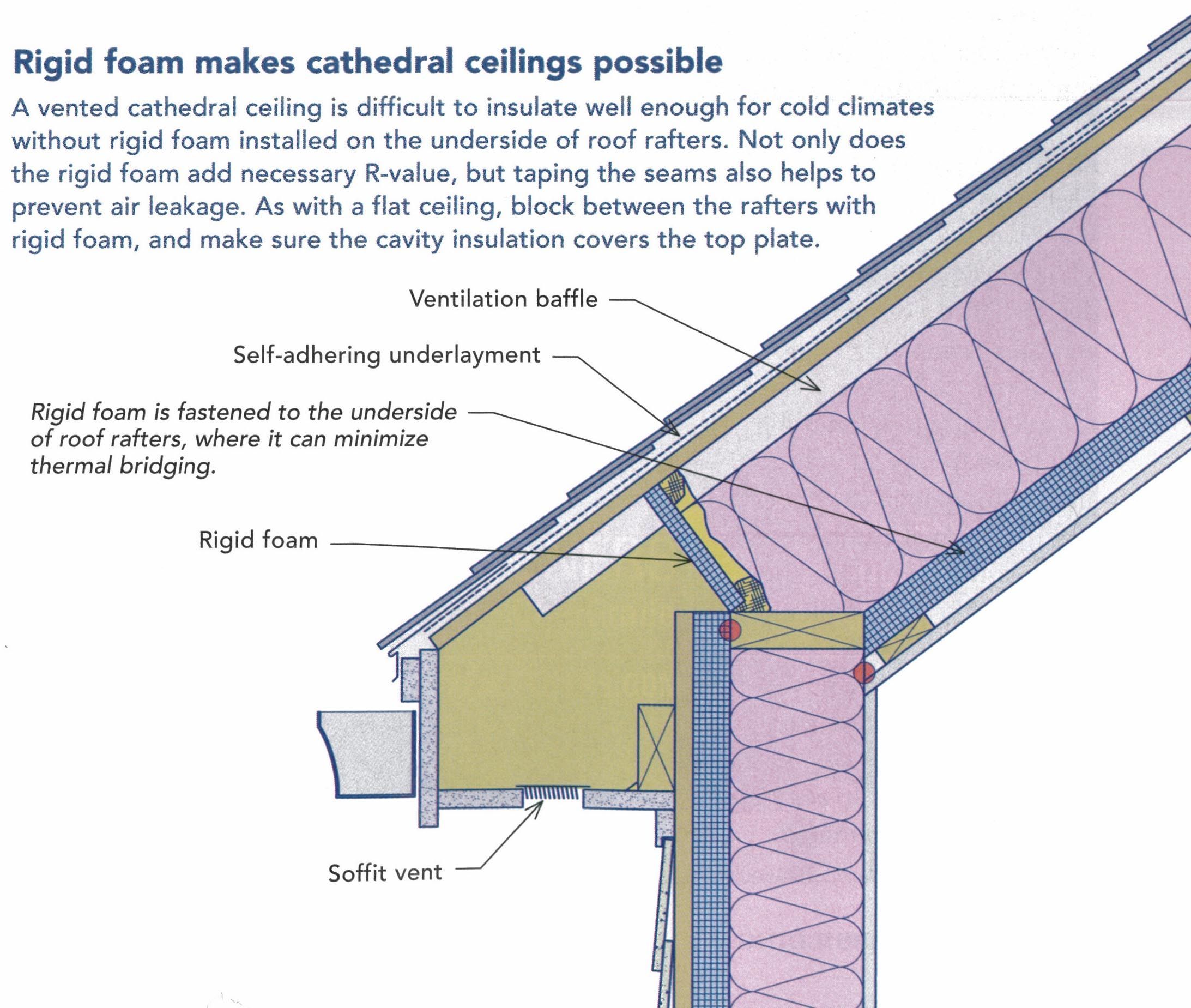Framing this out and buying 30 r fiberglass insulation will cost you about 50 more than just buying 5 inches of polyiso equivalent of 30 r.
Insulation between rafters flat roof.
Common rafter depths range from 100mm to 200mm.
Isover glass mineral wool gmw is another option for the between rafter insulation as a roll or batt.
Piling up pieces of rigid foam.
Refurbishing an existing timber joisted flat roof which has no insulation.
If your attic is going to be converted into livable space then you will need to insulate the roof rafters.
Install ventilation baffles into the space between the rafters before you install the insulation usually by stapling into place.
This is used for refurbishment e g.
This generally would not be a sufficient thickness to achieve the u values required to meet building regulations and more insulation would need to be added.
With a warm roof the usual process is to split the insulation into two layers.
The insulation is below the deck but above the plasterboard.
A cold deck flat roof will typically require insulation to be installed between the roof joists to comply with building regulation requirements.
Isover glass mineral wool gmw is another option for the between rafter insulation as a roll or batt.
If 180mm is to be installed then 100mm board might be introduced between the rafters there has to be a minimum 25mm air gap between the insulation and the underside of the tiles or slates with an 80mm board running across the rafters.
Installing stacks of rigid foam between rafters is slow fussy work but it might make sense for a do it yourselfer.
This limits the maximum thickness of the insulation between the rafters to between 50mm and 175mm.
Insulation between the rafters can be designed in two ways.
A cold flat roof is one where the insulation is between or between and below the roof joists.
Unless the joists are exceptionally deep there is also likely to be a requirement to install insulation to the underside of the joists as the upper 50mm of joist space is usually required to be left clear for ventilation purposes.
The flexible nature of gmw means that the roll or batts can be accurately cut and friction fitted between the rafters thereby minimising air gaps and maximising thermal performance.
Rigid foam also does a better job of stopping air flow as long as it s carefully sealed at the edges.
It should be installed on tapered 2x furring strips in order to slope the surface of the roof to drains.
Then install r 30 fiberglass batts between the rafters.
Most types of rigid foam insulation have a higher r value per inch than fiberglass batts.










